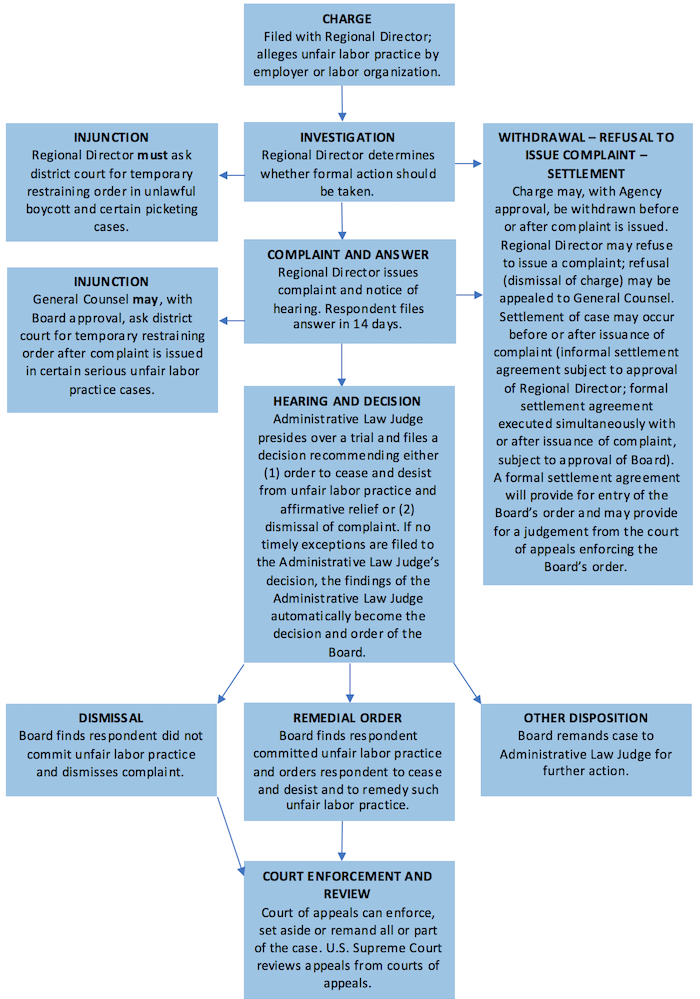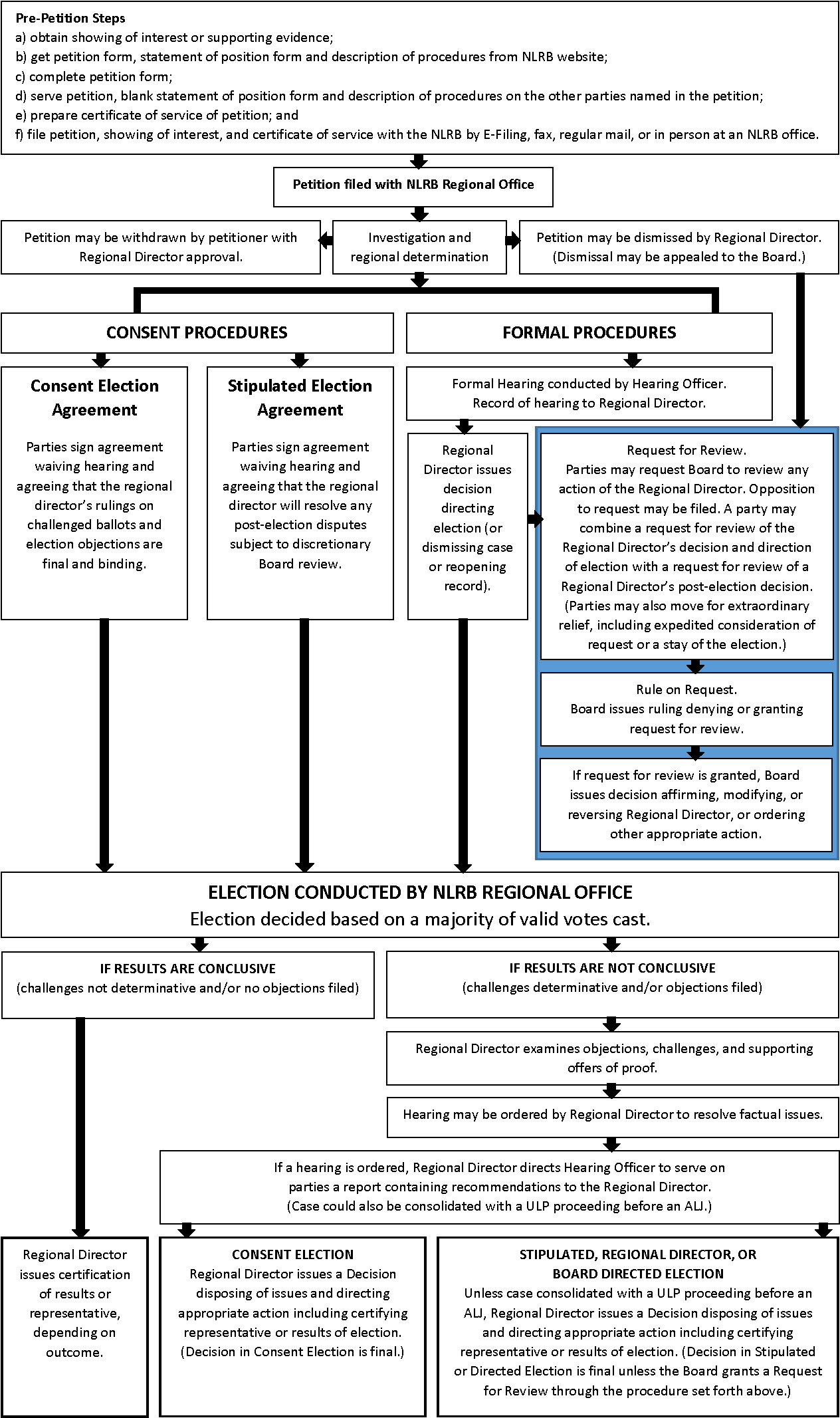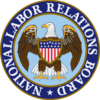The NLRB Process
The National Labor Relations Board is an independent federal agency vested with the power to safeguard employees' rights to organize and to determine whether to have unions as their bargaining representative. The chart below details steps in the unfair labor practice process. The second chart outlines the steps in the representation election process.
Process for Unfair Labor Practices

Representation Election Process
The National Labor Relations Act grants employees the right to bargain collectively through representatives of their own choosing and to refrain from such activity. A party may file an RC, RD or RM petition with the National Labor Relations Board (NLRB) to conduct a secret ballot election to determine whether a representative will represent, or continue to represent, a unit of employees. An RC petition is generally filed by a union that desires to be certified as the bargaining representative. An RD petition is filed by employees who seek to remove the currently recognized union as the bargaining representative. An RM petition is filed by an employer who seeks an election because one or more individuals or unions have sought recognition as the bargaining representative, or based on a reasonable belief supported by objective considerations that the currently recognized union has lost its majority status. The diagram below generally describes representation case procedures in RC, RD and RM cases, also referred to as certification and decertification cases.




